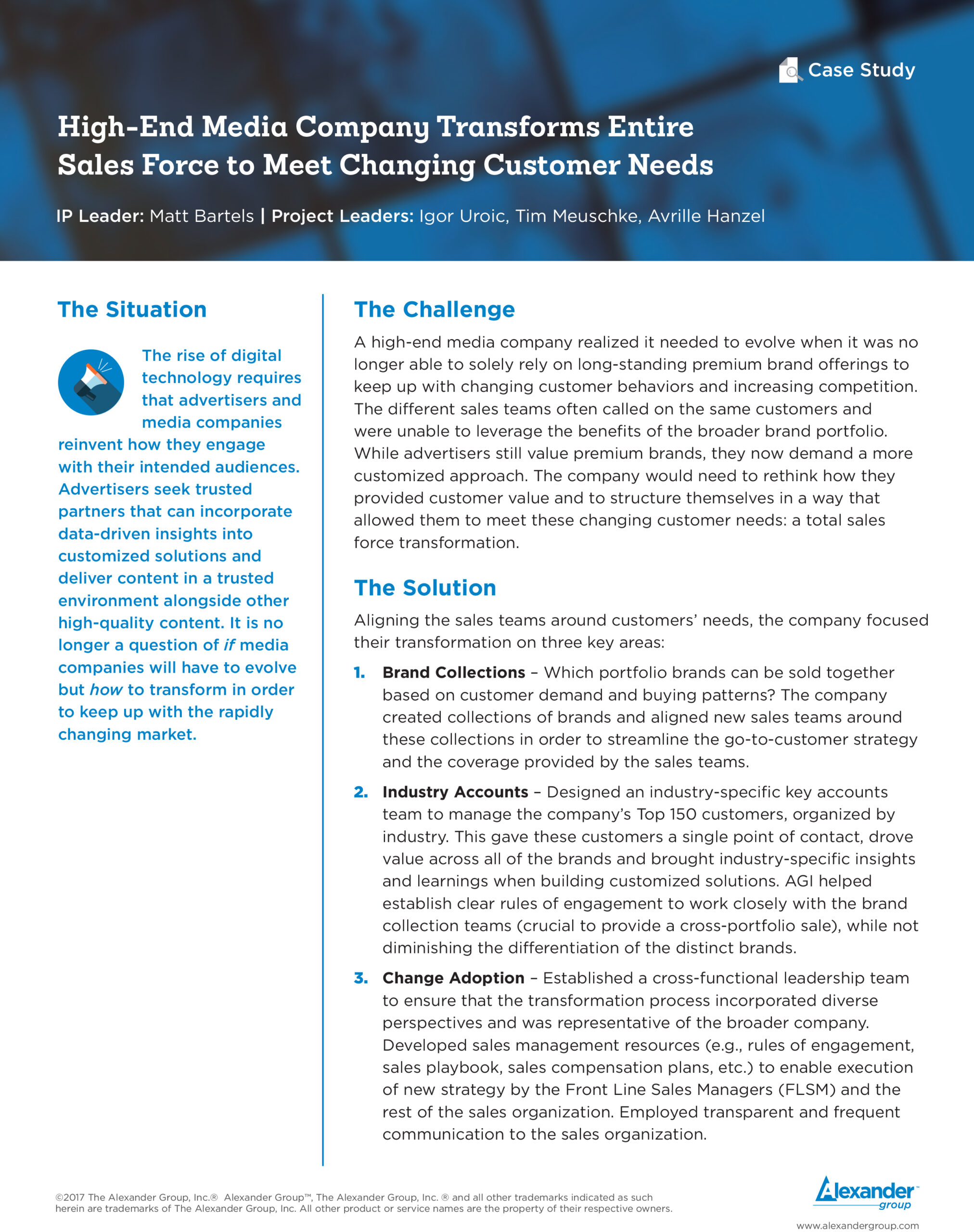High-End Media Company Transforms Entire Sales Force
 Situation:
Situation:
The rise of digital technology requires that advertisers and media companies reinvent how they engage with their intended audiences. Advertisers seek trusted partners that can incorporate data-driven insights into customized solutions and deliver content in a trusted environment alongside other high-quality content. It is no longer a question of if media companies will have to evolve but how to transform in order to keep up with the rapidly changing market.
Challenge:
A high-end media company realized it needed to evolve when it was no longer able to solely rely on long-standing premium brand offerings to keep up with changing customer behaviors and increasing competition. The different sales teams often called on the same customers and were unable to leverage the benefits of the broader brand portfolio. While advertisers still value premium brands, they now demand a more customized approach. The company would need to rethink how they provided customer value and to structure themselves in a way that allowed them to meet these changing customer needs: a total sales force transformation.
Solution:
Aligning the sales teams around customers’ needs, the company focused their transformation on three key areas:
1. Brand Collections – Which portfolio brands can be sold together based on customer demand and buying patterns? The company created collections of brands and aligned new sales teams around these collections in order to streamline the go-to-customer strategy and the coverage provided by the sales teams.
2. Industry Accounts – Designed an industry-specific key accounts team to manage the company’s Top 150 customers, organized by industry. This gave these customers a single point of contact, drove value across all of the brands and brought industry-specific insights and learnings when building customized solutions. AGI helped establish clear rules of engagement to work closely with the brand collection teams (crucial to provide a cross-portfolio sale), while not diminishing the differentiation of the distinct brands.
3. Change Adoption – Established a cross-functional leadership team to ensure that the transformation process incorporated diverse perspectives and was representative of the broader company.Developed sales management resources (e.g., rules of engagement, sales playbook, sales compensation plans, etc.) to enable execution of new strategy by the Front Line Sales Managers (FLSM) and the rest of the sales organization. Employed transparent and frequent communication to the sales organization.
Benefit:
Organizing the sales teams around customers allowed this company to develop collective learnings and bring unique insights through data to their customers. The company’s image as an attractive alternative to some of the large media platforms (e.g., Facebook, Google, etc.) continues to evolve with its robust portfolio of brands. Finally, FLSMs made the new strategy a reality by ensuring these new sales teams clearly understood the rules of engagement; they drove revenue not only within their own team, but also leveraged opportunities across teams when it made sense for the customer and the company. Overall, the transformation allowed this company to go to market with much more creative, integrated and customer-focused solutions.
Download a PDF of this Case Study »
Learn more about Alexander Group’s Media practice.